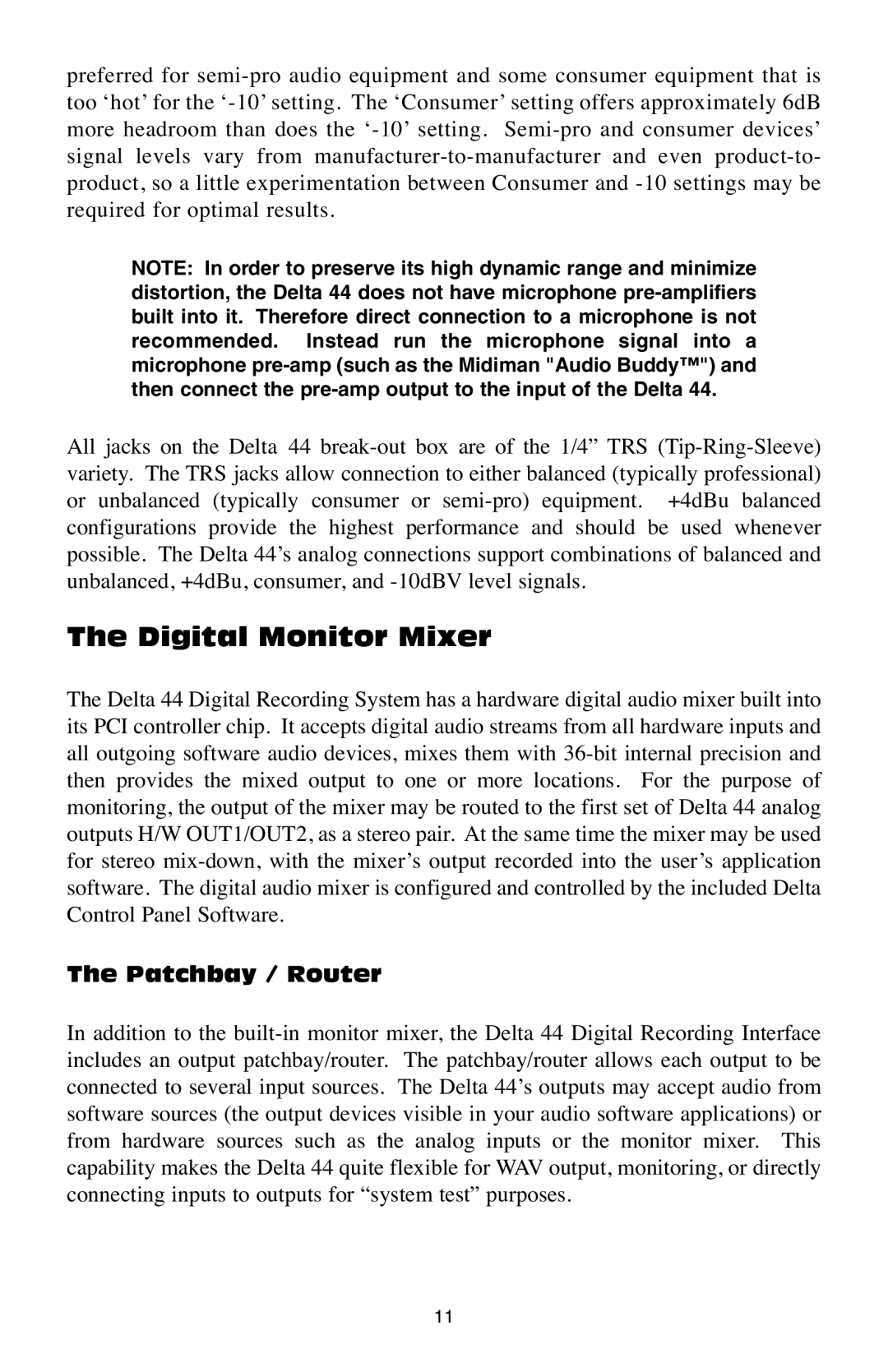preferred for semi-pro audio equipment and some consumer equipment that is too ‘hot’ for the ‘-10’ setting. The ‘Consumer’ setting offers approximately 6dB more headroom than does the ‘-10’ setting. Semi-pro and consumer devices’ signal levels vary from manufacturer-to-manufacturer and even product-to- product, so a little experimentation between Consumer and -10 settings may be required for optimal results.
NOTE: In order to preserve its high dynamic range and minimize distortion, the Delta 44 does not have microphone pre-amplifiers built into it. Therefore direct connection to a microphone is not recommended. Instead run the microphone signal into a microphone pre-amp (such as the Midiman "Audio Buddy™") and then connect the pre-amp output to the input of the Delta 44.
All jacks on the Delta 44 break-out box are of the 1/4” TRS (Tip-Ring-Sleeve) variety. The TRS jacks allow connection to either balanced (typically professional) or unbalanced (typically consumer or semi-pro) equipment. +4dBu balanced configurations provide the highest performance and should be used whenever possible. The Delta 44’s analog connections support combinations of balanced and unbalanced, +4dBu, consumer, and -10dBV level signals.
The Digital Monitor Mixer
The Delta 44 Digital Recording System has a hardware digital audio mixer built into its PCI controller chip. It accepts digital audio streams from all hardware inputs and all outgoing software audio devices, mixes them with 36-bit internal precision and then provides the mixed output to one or more locations. For the purpose of monitoring, the output of the mixer may be routed to the first set of Delta 44 analog outputs H/W OUT1/OUT2, as a stereo pair. At the same time the mixer may be used for stereo mix-down, with the mixer’s output recorded into the user’s application software. The digital audio mixer is configured and controlled by the included Delta Control Panel Software.
The Patchbay / Router
In addition to the built-in monitor mixer, the Delta 44 Digital Recording Interface includes an output patchbay/router. The patchbay/router allows each output to be connected to several input sources. The Delta 44’s outputs may accept audio from software sources (the output devices visible in your audio software applications) or from hardware sources such as the analog inputs or the monitor mixer. This capability makes the Delta 44 quite flexible for WAV output, monitoring, or directly connecting inputs to outputs for “system test” purposes.
